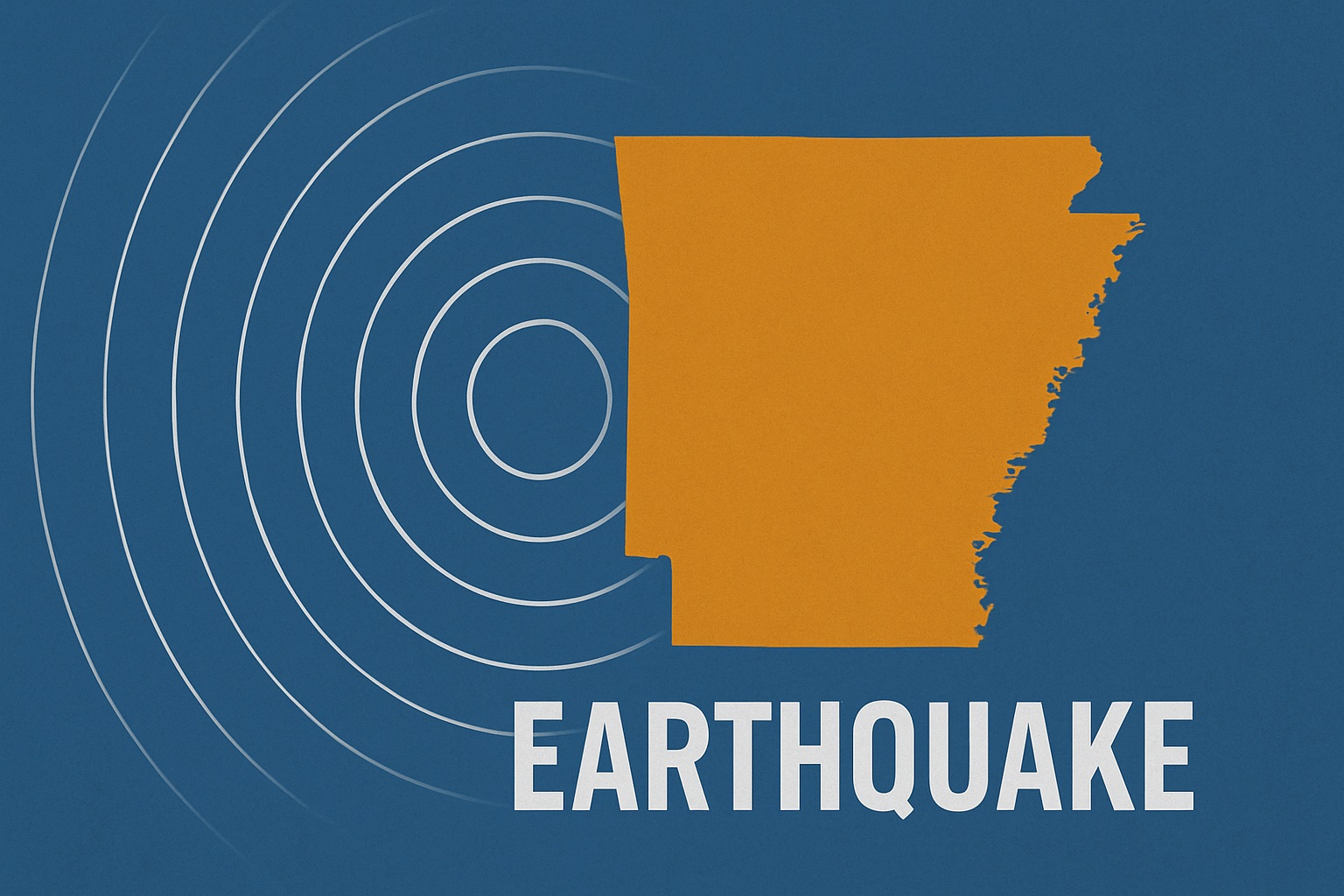WARREN, Ark. – A massive 8.8 magnitude earthquake that struck off the Pacific coast of Russia on July 29 sent seismic shockwaves across the globe—waves that were recorded as far away as Arkansas.
While no damage or shaking was reported locally, sensitive seismic equipment across the state captured the unmistakable vibrations from the distant quake, offering a sobering reminder of how interconnected our planet truly is.
Global Quake, Local Signature
The earthquake occurred on the seafloor near Russia’s Kamchatka Peninsula, a seismically active region along the Pacific “Ring of Fire.” Despite being more than 5,000 miles away, the tremor’s immense energy propagated through the Earth’s crust and mantle, eventually reaching the southeastern United States.
Arkansas seismographs—devices used to detect and record ground motion—picked up the distant quake’s signals with varying clarity depending on the station’s location and equipment sensitivity.
What the Seismographs Reveal
Four seismic graphs from different Arkansas locations—Lake Charles, Needham, Qualls, and Maynard—tell the story of the distant earthquake’s journey beneath our feet:
- Lake Charles, AR (LCAR HNZ HG 00)
The graph shows relatively quiet lines until around 7:00 PM, when low-frequency waves begin to appear. By 2:00 AM (early July 30), small but clear spikes indicate the arrival of long-period surface waves. These low-amplitude, long-wavelength signals are typical of distant quakes. - Needham, AR (NIHR EHZ NM 00)
This station captured the quake more clearly. At approximately 6:05 PM, a sharp burst of activity is visible—a likely signature of the P-waves (primary waves) arriving. These are the fastest seismic waves and the first to reach distant locations. A more sustained vibration follows, likely representing S-waves (secondary waves). - Qualls, AR (QUAR HHZ NM 00)
A dramatic response is recorded here. Beginning around 4:00 PM and especially after 6:00 PM, the chart lights up with high-amplitude oscillations. These dense, chaotic waves—visible well into the early morning hours—indicate that this station picked up strong surface waves, which travel along the Earth’s crust and tend to cause the most prolonged shaking. - Maynard Temporary Station (XB03 HHZ AG 00)
The Maynard station shows a somewhat delayed but very pronounced response beginning just before 6:00 PM and continuing steadily through the early hours of July 30. Its graph is densely packed with energy, suggesting consistent ground motion for several hours.
The Science Behind It
Seismic waves from large earthquakes travel around the globe, bending and bouncing through different layers of Earth’s interior. Some waves travel through the solid mantle, others skim the crust, and a few even pass through the liquid outer core. Arkansas, while far from tectonic plate boundaries, is dotted with seismic monitoring stations due to its proximity to the New Madrid Seismic Zone.
These instruments help scientists understand both regional activity and distant events. Events like the Russian quake give geologists a chance to study how seismic waves behave over long distances and through various rock types.
A Global Event, A Local Reminder
Although Arkansas residents slept soundly through the event, unaware of the trembling beneath them, the seismographs silently logged the passing of energy released halfway across the world. It’s a quiet but powerful reminder that no part of the Earth exists in isolation.
The Earth moved—and Arkansas noticed.
For those curious about real-time seismic activity, you can visit USGS.gov to view live seismic data from around the world.






